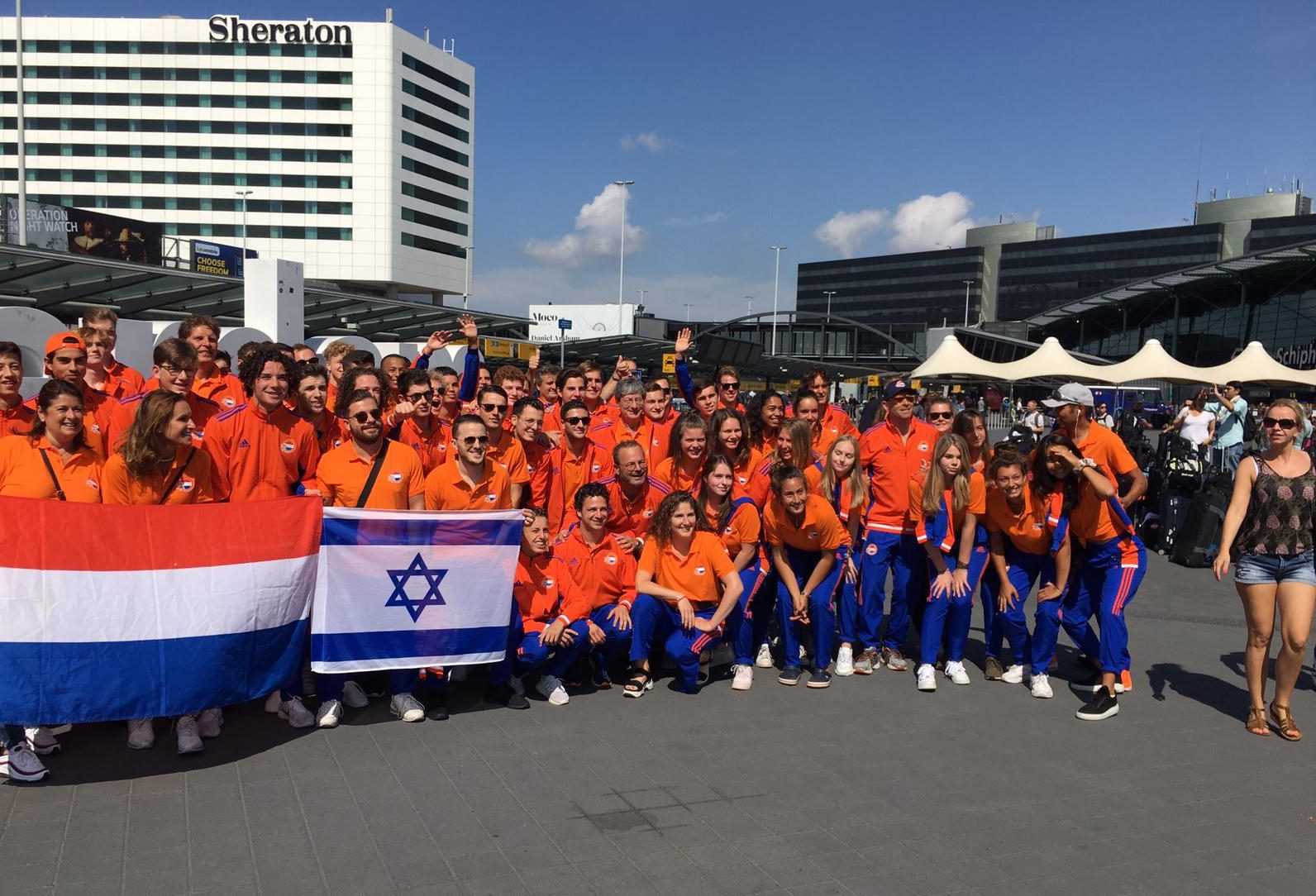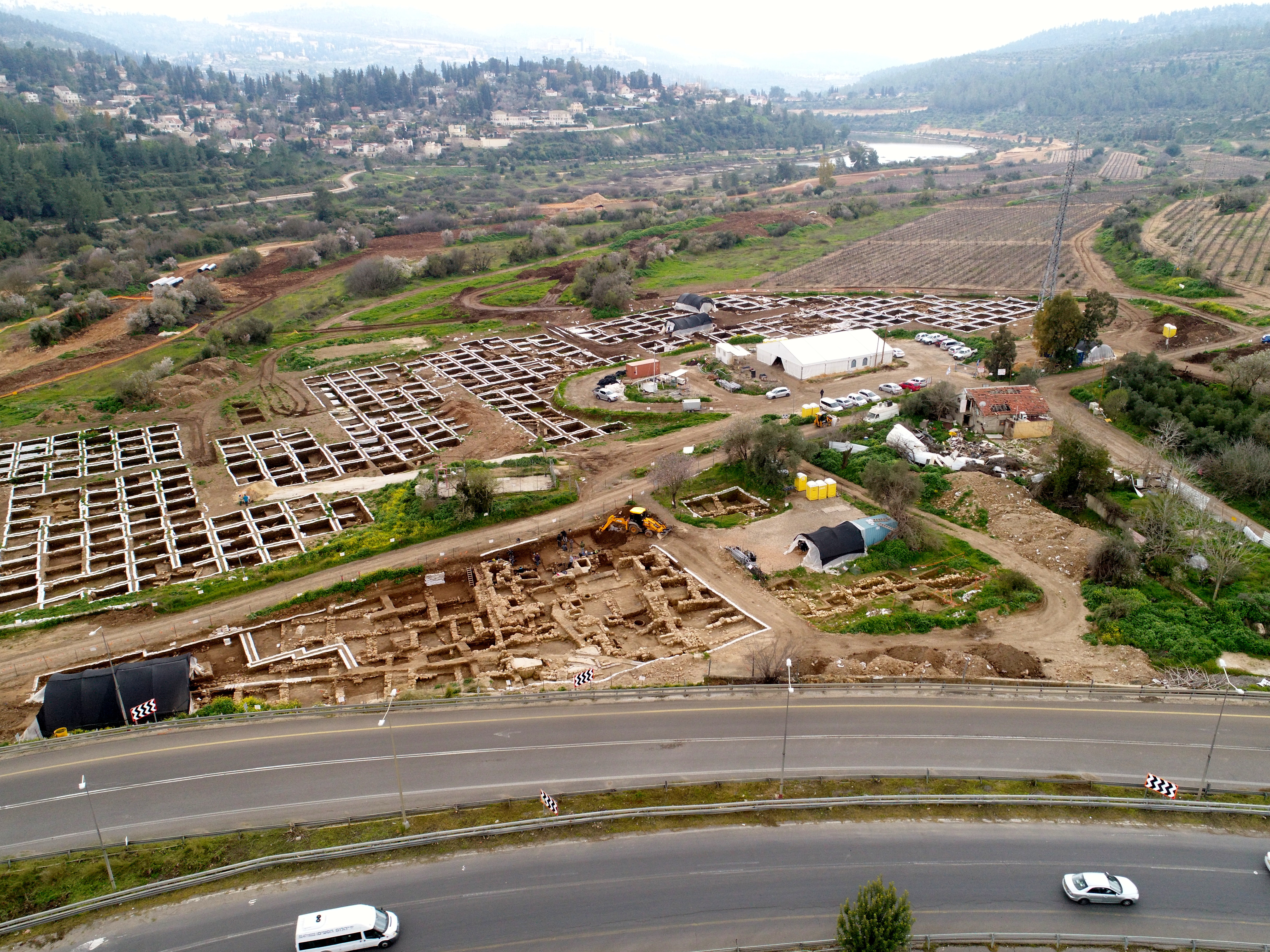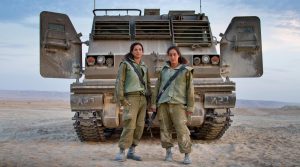
Twee strijders en instructeurs van het Artillery Corps in Shivta, Israël (Debbie Zimelman)
Debbie Zimelman, een Amerikaanse fotograaf die al dertig jaar in Israël woont, heeft vijf jaar doorgebracht met jonge vrouwen die in 20 gevechtseenheden dienden om hun ervaringen vast te leggen. Het resultaat is een fotoboek, “Women on the Front Lines: Inside the Combat Units of the Israeli Army”, dat ze in april zelf publiceerde. Het boek is beschikbaar via haar website en zal binnenkort op Amazon worden verkocht, aldus JTA.
Vrouwen dienden als soldaten tijdens de Israëlische Onafhankelijkheidsoorlog, toen het jonge land iedereen nodig had die het kon krijgen. Maar na de oorlog van 1948 duurde het een halve eeuw voordat ze weer in de strijd mochten.
Sinds het einde van de jaren negentig, toen sommige eenheden vrouwelijke rekruten begonnen toe te staan, is het aantal vrouwen dat in een gevechtseenheid dienst doet snel toegenomen. Afgelopen zomer zag een record van 1000 vrouwelijke soldaten die een training als “combat soldier” begonnen.
JTA had een lang interview met Debbie Zimelman, om niets van de inhoud te missen geven wij dat hierna integraal weer
JTA: Why did you decide to focus on women serving in combat units?
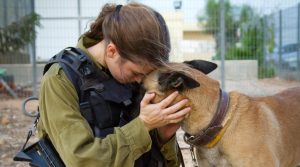

Een soldaat in de speciale honden unit in Hatzerim, Israël (Debbie Zimelman)
Zimelman: When my friend’s daughter volunteered for a combat unit in the army around 2012, I remember being surprised because it was the first time that I had heard of women serving as combat soldiers. I remember being very impressed at her decision to volunteer for a combat unit.
Since I had missed out on that the opportunity to serve in the army, having made aliyah after army age, the next best thing would be to get permission to photograph my friend’s daughter Sarit while she was in the army. I thought that I could use the camera to gain access to a place otherwise closed to me, and to see up close and photograph what she was doing on a daily basis.
I was also curious to see what the women actually did during their service, how happy they were with their choices, what motivated them, etc.
What do you hope to show with these photos?
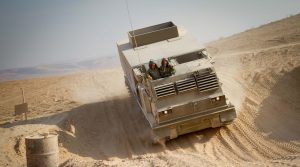

Artillerie Corps vechters en instructeurs in Shivta (Debbie Zimelman)
I was really hoping to understand and show what the experience of combat service was like for women, to hear and share their stories, to understand how satisfied they were with their decision, how they felt about their service and themselves as a result of serving in combat units. I also wanted to show the wide range of units women can serve in today, all over the country, including the Air Force and Navy as well as the army.
Did you see anything that surprised you?
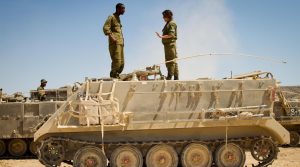

Soldaten op tank- en luchtmachttraining in de noordelijke Negev (Debbie Zimelman)
I think I was most surprised by how satisfied, fulfilled and happy the women were with their decision to serve as combat soldiers. I was also surprised at the range of opportunities open to women today. Almost all of the women I spoke to talked about how empowered they felt as a result of their experiences.
What were the challenges in photographing the women?
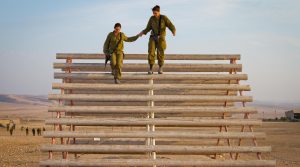

Soldaten op een hindernisbaan in Shivta (Debbie Zimelman)
First of all, getting permission to create the book was a tremendous challenge. As the first person ever to be granted permission to carry out such an extensive project on combat women, I spent many months pushing along the process before I even began to photograph.
Once I gained permission, the technical limitations surrounding the photo shoots made the book very challenging. Depending on the unit, I had anywhere from 15 minutes to 24 hours to spend with the soldiers. Sometimes this was after driving 3 hours just to get to a base. Other times I was told that due to a change in plans I had only 15 minutes to spend rather than the hour or more I had been promised. Often I ended up shooting at the least attractive hour of the day with the sun overhead, again due to the army logistics.
I was accompanied on every photo shoot by the Army Spokesman’s Office. They often limited the direction in which I could shoot according to the security needs of the army. This restriction, combined with the direction of the sun, made creating images very challenging.
Do you have a favorite photo and if so, which one and why?
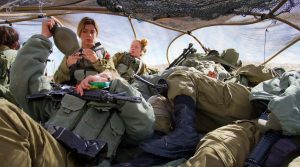

Een “field intelligence” oefening in een gecamoufleerde “rots” bij Eilat (Debbie Zimelman)
One of the photos I love is of the field intelligence unit, the unit that is responsible for secretly watching our borders with Egypt and Jordan.
I was lucky to be able to photograph and participate in this unit’s exercise on their base near Eilat. I arrived on the base near sunset, as the women were getting ready to go out into the desert, with tens of kilograms of equipment on their backs. Several kilometers later we reached our destination, and they began to build a mock “rock” from where they would spend the next 48 hours observing the border. This was a practice session within Israel in preparation for their first real mission the following week.
Once the “rock” was ready, all 11 girls, myself and the army spokesman representative got inside where they were to remain for the next 48 hours. We had brought everything we might need for 48 hours with us, and it was now all inside the rock.
This experience was a real highlight for me, and a photographer’s dream. I was stuck inside a rock for hours on end with 11 bored girls, and as the hours went by they loosened up, and completely forgot I was there. Being part of their adjustment process to being in such a small space was fascinating. Because I was inside with them for hours it allowed me to capture amazing pictures.
Steun Joods.nl en doe een donatie: Klik hier








